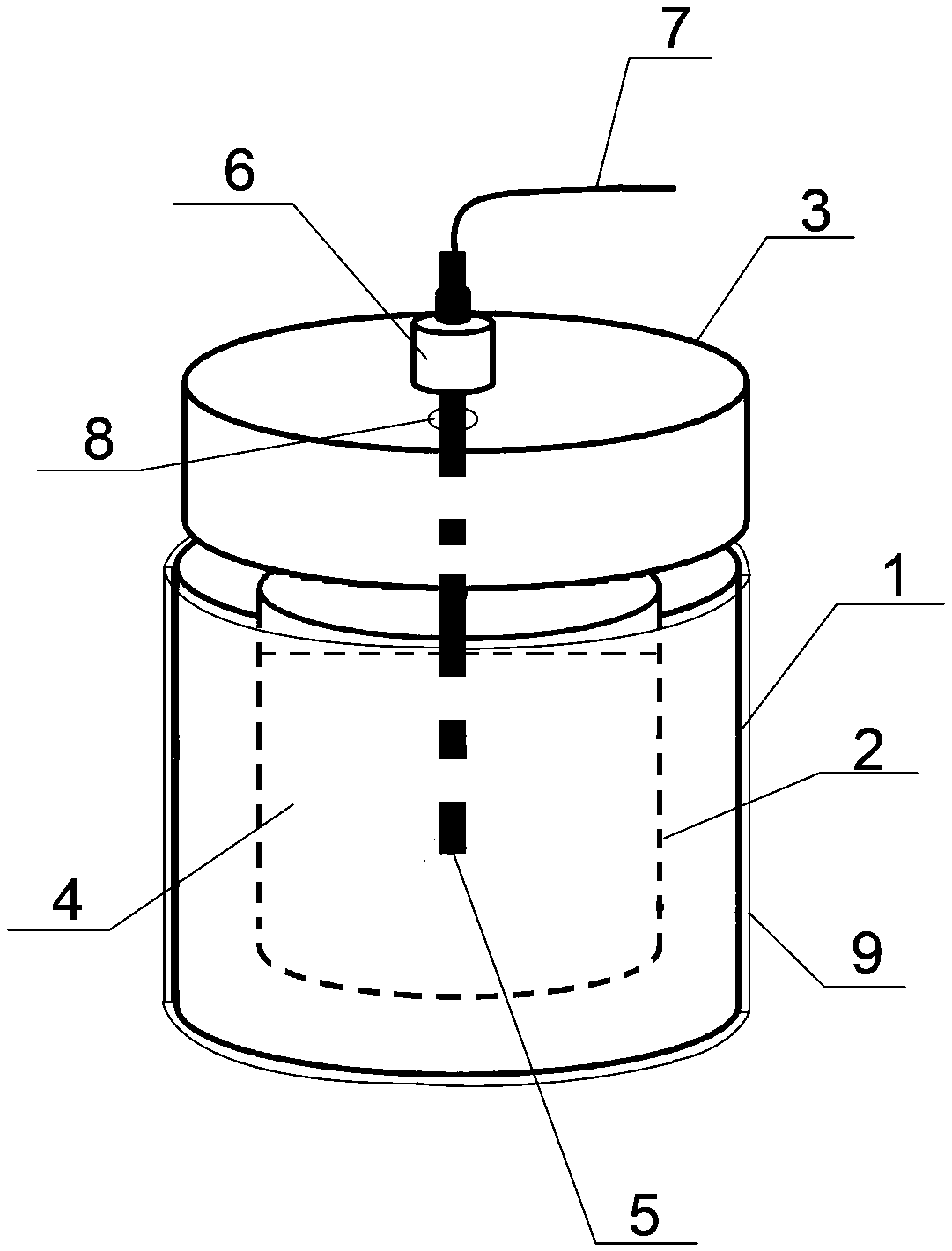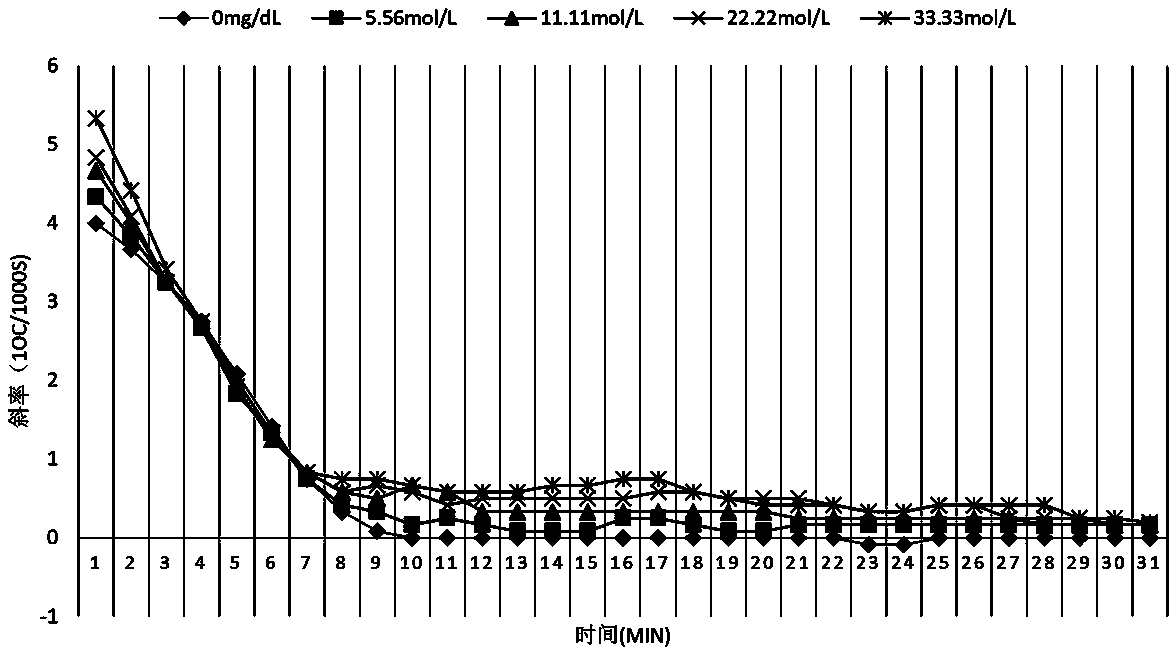Simulation experiment and non-invasive blood glucose detection method based on body heat production-dissipation model
A simulation experiment and blood sugar detection technology, which is applied in the field of blood sugar detection, can solve the problems of blood sugar calculation errors, physiological cycle affecting human body temperature, etc., and achieve the effects of low cost, elimination of body temperature fluctuations, and simple operation
- Summary
- Abstract
- Description
- Claims
- Application Information
AI Technical Summary
Problems solved by technology
Method used
Image
Examples
Embodiment 1
[0206] The structure of the body heat production-radiation model of the present embodiment is as follows: figure 1 shown. The body heat generation-radiation model includes a hollow cylinder (1) with a sealed bottom and an open top, and the hollow cylinder (1) simulates a human body heat capacity. The height of the inner wall of the hollow cylinder (1) is lower than the height of the outer wall, and a polymer film (2) is pasted on the outer wall of the hollow cylinder (1). The model also includes a loam cake (3), simulated body fluid (4), Temperature probe (5), fixing plate (6) and temperature sensor wire (7). The upper cover (3) is arranged on the opening of the hollow cylinder (1), and the upper cover (3) is provided with an upper cover through hole (8) along the central axis. The simulated body fluid (4) is arranged in the cavity of the hollow cylinder (1). The fixed plate (6) is sleeved on the top of the temperature probe (5), and the diameter of the fixed plate (6) is s...
Embodiment 2
[0232] According to the above simulation experiment results, the relationship between the temperature change of the simulated heat storage body and the glucose concentration can be characterized by the characteristic parameters of the temperature dynamic change. Table 2 is a set of measured data. The simulated body temperature for preheating of the heat capacitor is 36.2°C. The probe preheat temperature is 35.2°C. The environmental conditions are: 22.5°C, 50%, 0m / s. Five glucose concentrations were selected. The temperature change of the simulated body fluid is measured and recorded after the thermal mass body is placed in the environmental simulation box, and is recorded once every minute, and the test is completed after 30 minutes.
[0233] Table 2. Relationship between heat mass temperature and glucose concentration
[0234]
[0235]
[0236] Based on Table 2, the time-domain diagram of the temperature of the body fluid with five glucose concentrations changing wi...
PUM
 Login to View More
Login to View More Abstract
Description
Claims
Application Information
 Login to View More
Login to View More - R&D
- Intellectual Property
- Life Sciences
- Materials
- Tech Scout
- Unparalleled Data Quality
- Higher Quality Content
- 60% Fewer Hallucinations
Browse by: Latest US Patents, China's latest patents, Technical Efficacy Thesaurus, Application Domain, Technology Topic, Popular Technical Reports.
© 2025 PatSnap. All rights reserved.Legal|Privacy policy|Modern Slavery Act Transparency Statement|Sitemap|About US| Contact US: help@patsnap.com



